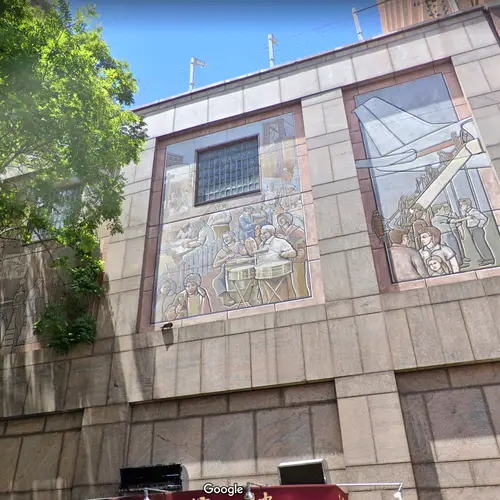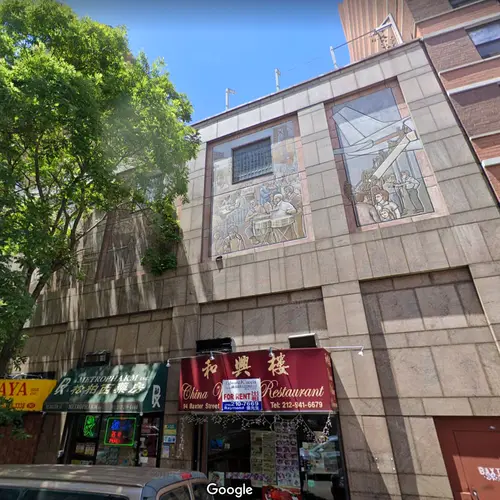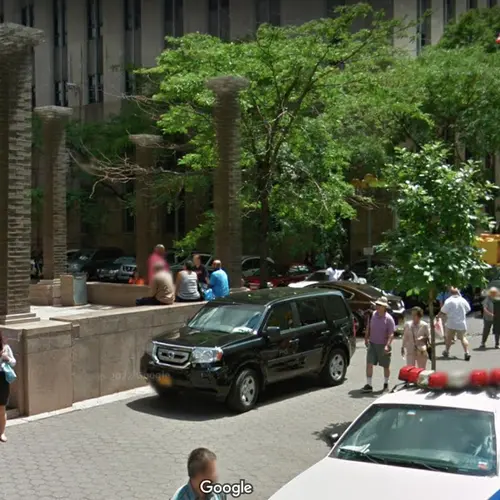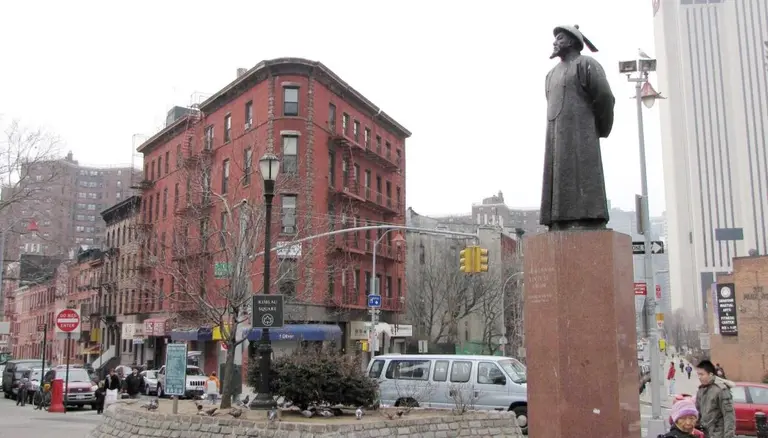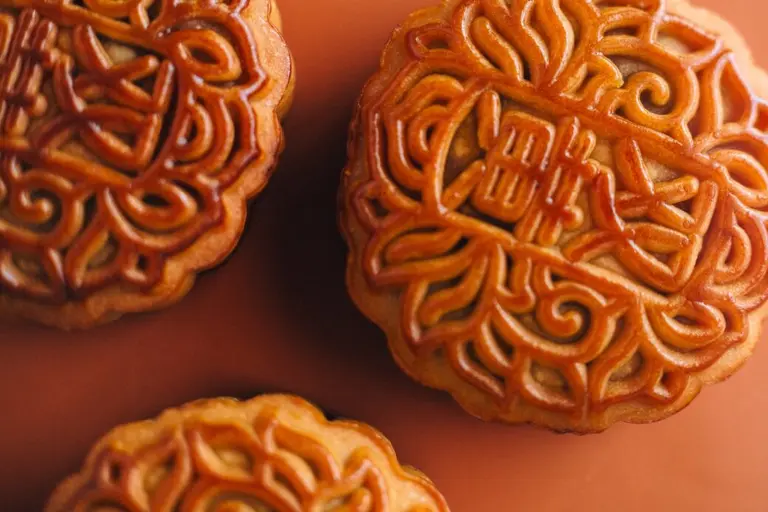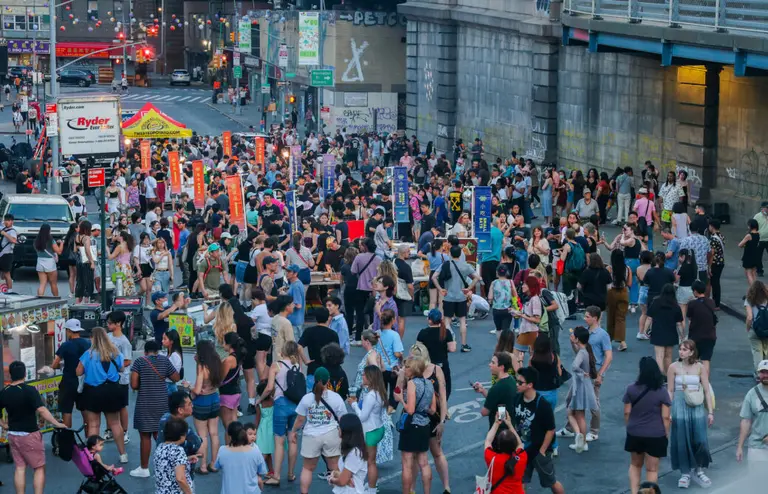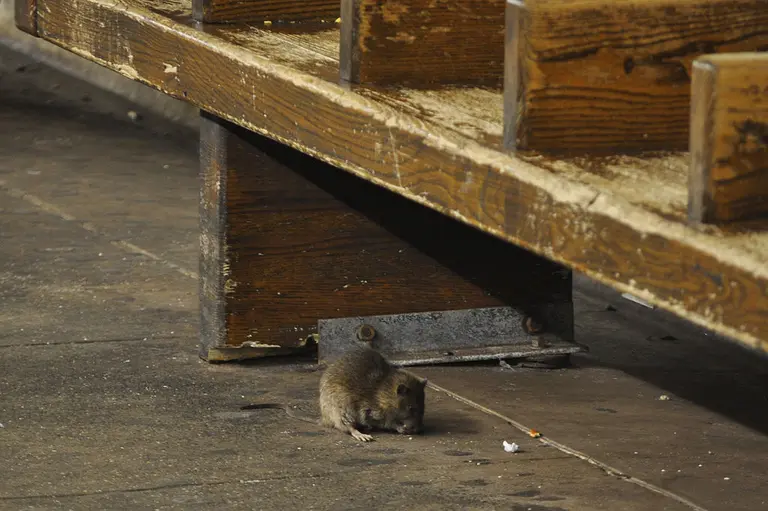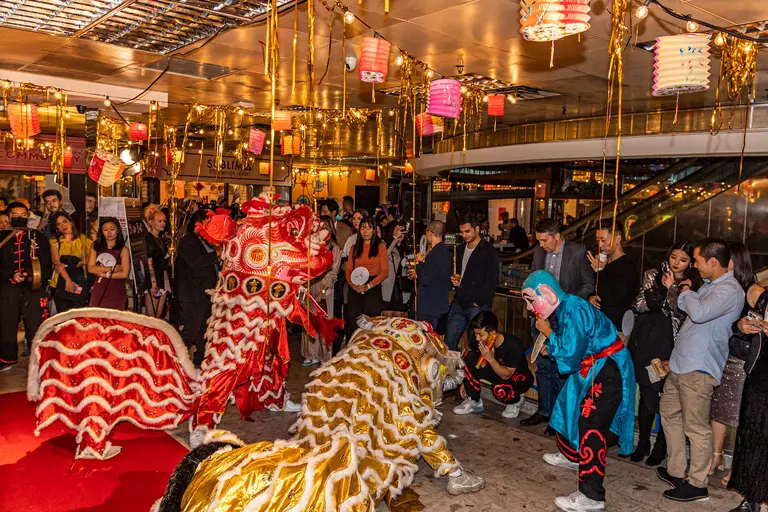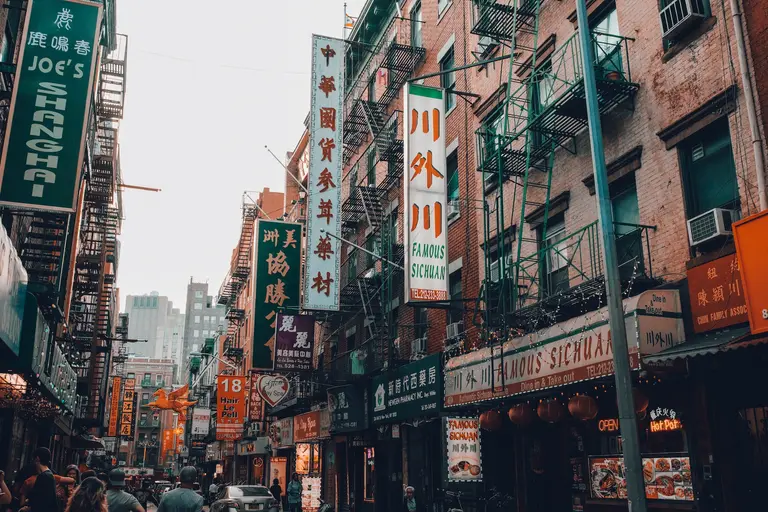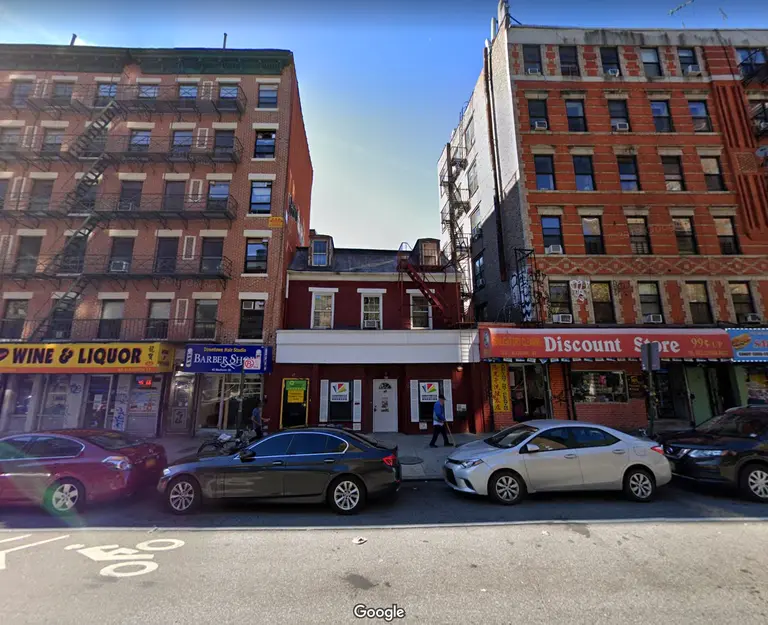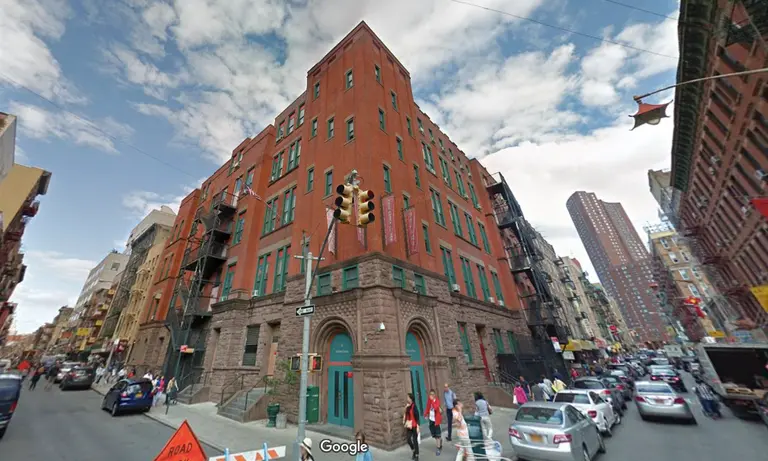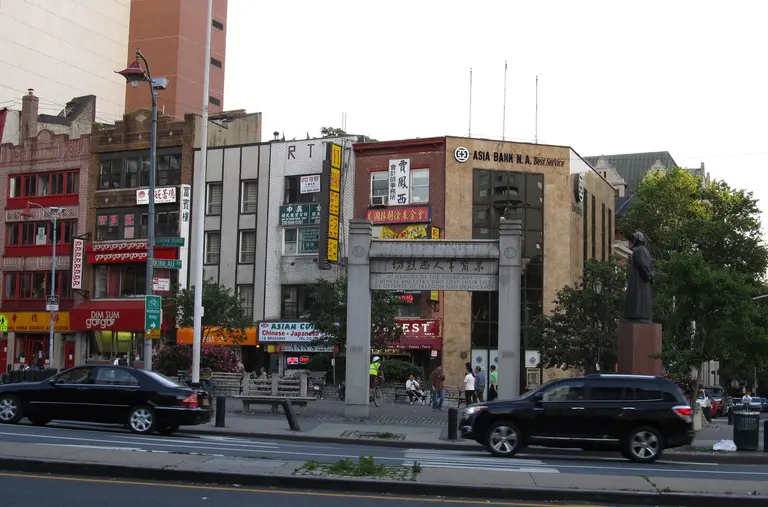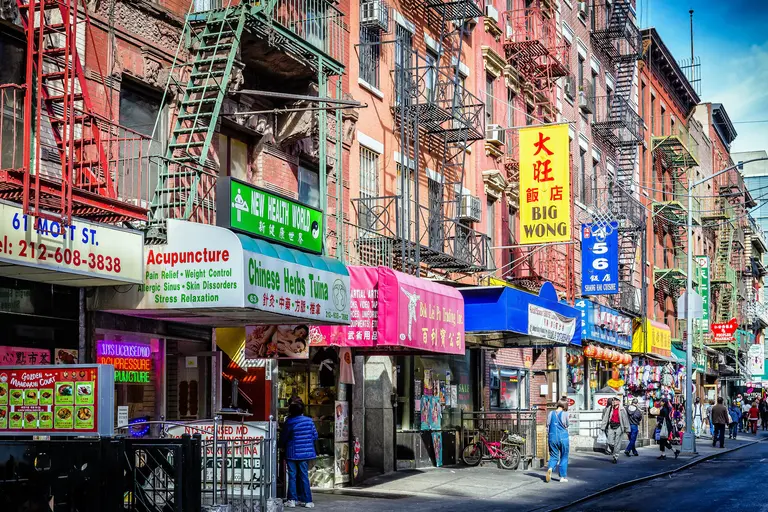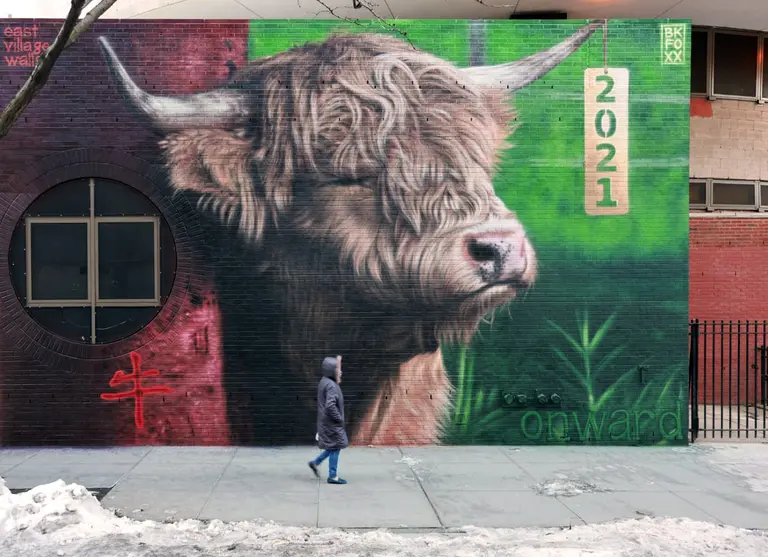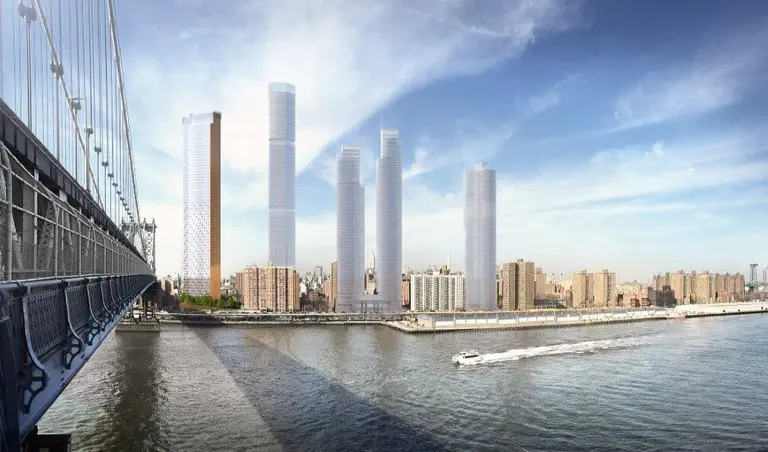Judge rules artists’ work won’t stop Manhattan jail demolition
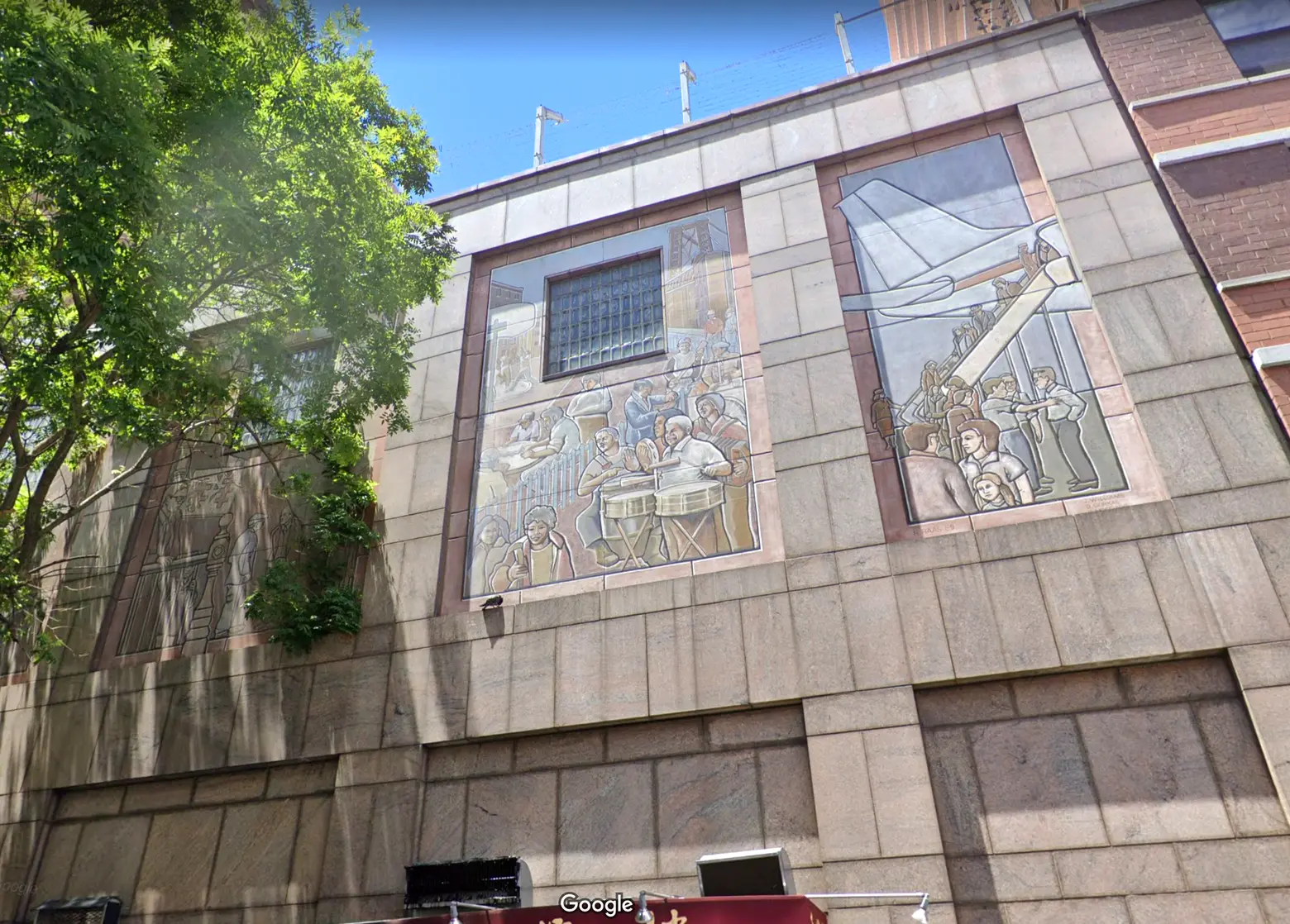
Streetview of murals by Richard Haas at the Manhattan Detention Complex; © Google 2022
On Wednesday, a judge ruled against halting the demolition of the Manhattan Detention Complex at 124-125 White Street at a hearing in a lawsuit brought by two artists whose works at the site may be moved or destroyed, the New York Times reports. The plaintiffs had requested a preliminary injunction; Judge Lewis A. Kaplan of the U.S. District Court for the Southern District of New York denied the request, citing a lack of proof that preserving the artworks outweighed the community value of a newly-constructed jail planned for the site. The artists–with support from Neighbors United Below Canal, a neighborhood group opposed to the new Chinatown jail–had invoked the Visual Artists Rights Act of 1990 as grounds for the lawsuit.
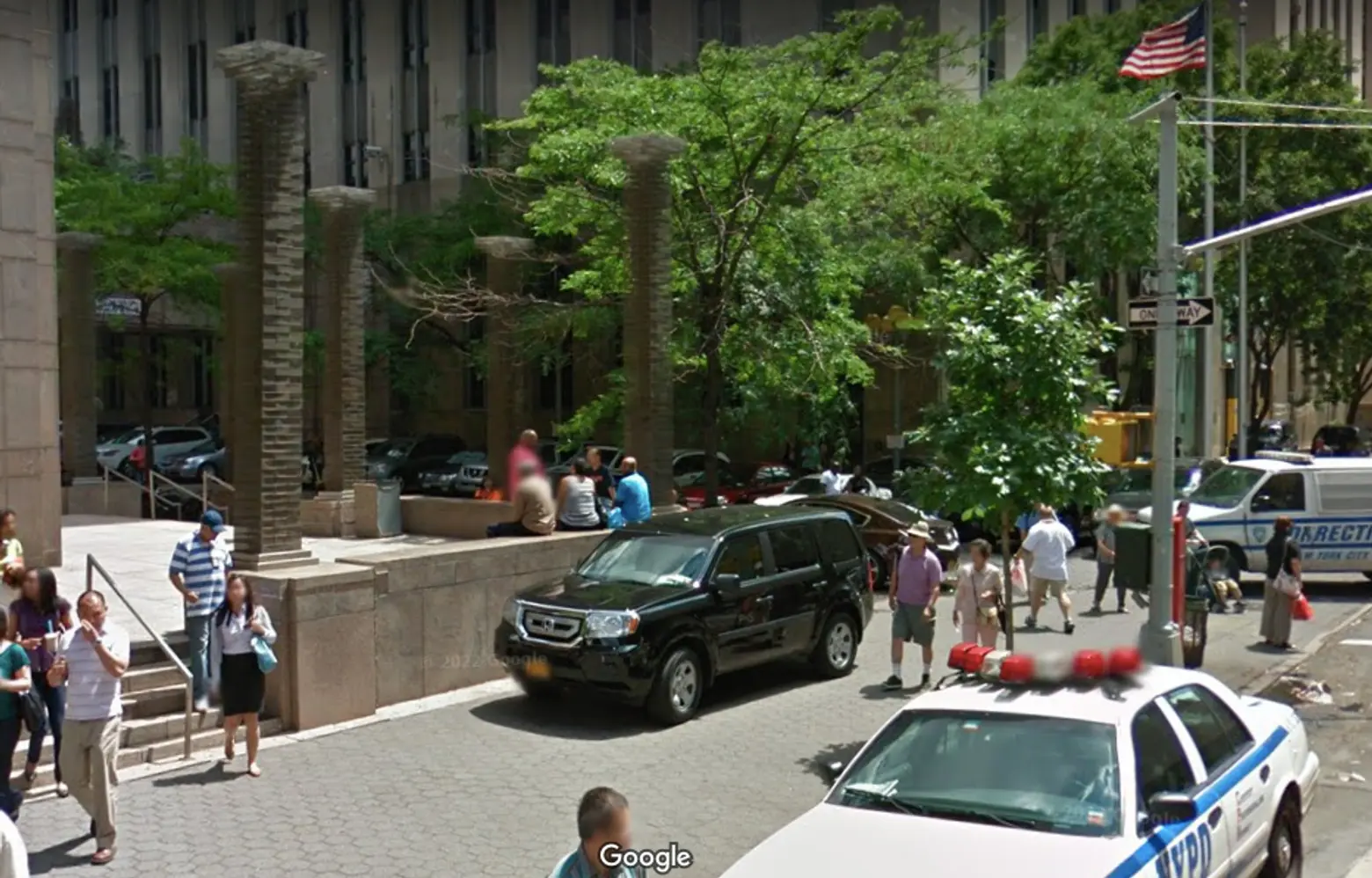
Streetview of Kit-Yin Snyder’s “The Seven Columns of the Temple of Wisdom” sculptures at the Manhattan Detention Complex; © Google 2022
The art in question consists of Kit-Yin Snyder’s “The Seven Columns of the Temple of Wisdom” sculptures; a paving stone design; a chair symbolizing Solomon’s biblical throne; seven murals by Richard Haas painted onto the building that tell a history of immigration; and a nearby frieze, also by Haas, titled “The Judgements of Solomon and Pao Kung.” The art was installed in 1992.
Snyder and Haas were granted a temporary restraining order Friday. The artists’ complaint was based on the idea that, even if they weren’t demolished, relocating the artworks, which present “immigrant struggle and wish for justice,” would diminish their value and dilute the artistic vision behind them. In their lawsuit, the artists claimed their work was part of a reconciliation plan between the neighborhood and the city during the initial approval of the detention complex in the 1980s.
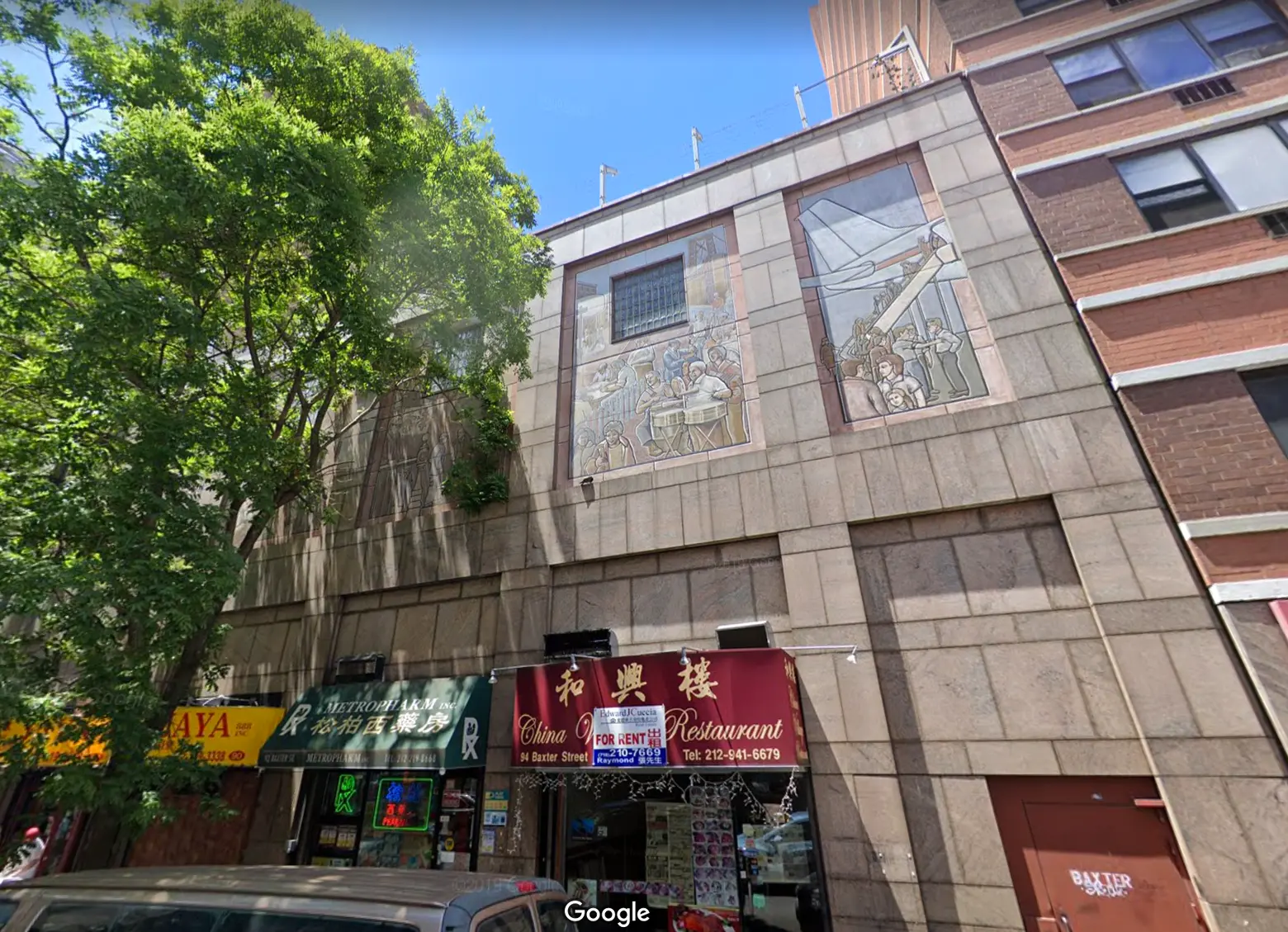
The city has created a plan to relocate some of Snyder’s artwork to Rikers Island, but other works will need to be destroyed in the demolition, including Haas’ murals. Administrators have suggested the murals be reproduced at the new Chinatown jail when it is completed, or at a different location.
The Visual Artists Rights Act has been invoked on behalf of public art on property that is owned by someone else. The law was used in the case involving the Queens 5Pointz development, resulting in a federal judge’s ruling that the developer would be required to pay $6.75 million in fines for the destruction of existing work there by 21 graffiti artists.
Snyder said in a statement to the Times, “I’m very disappointed. Moving my artworks to Rikers Island, in my point of view, is like putting my artworks in jail.”
Department of Cultural Affairs spokesman Ryan Max said in a statement that “after working with the artists in good faith over many months, we believed we had reached agreements with them both,” adding that the city had taken steps to preserve and document the work.
RELATED:
- City nixes plan for second Chinatown homeless shelter amid community opposition
- Judge upholds $6.75M judgement against developer who destroyed 5Pointz graffiti
- 5Pointz graffiti artists whose work was destroyed will get a chance to face developer in court
- 5Pointz Artists Sue Developer for Whitewashing Iconic Graffiti Facade
